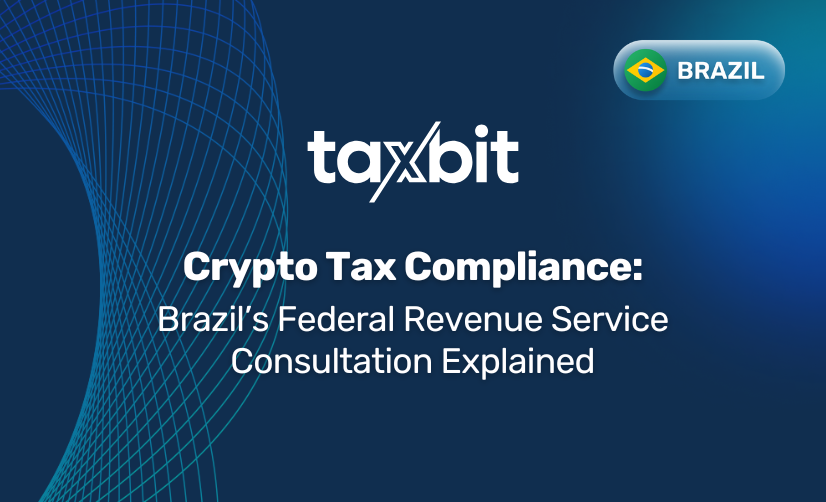Wash sales cause issues for stock investors, but the rules are different for crypto. Read this guide to learn all about the wash sale rule and cryptocurrency.
Introduction
In an evolving financial landscape where digital assets are becoming a cornerstone of enterprise investment strategies, understanding the nuances of tax regulations is paramount. This guide provides a detailed analysis of the wash sale rule for digital assets and cryptocurrency.
What is tax-loss harvesting?
Before we cover the wash sale rule, let’s first explain crypto tax-loss harvesting as this is where the wash sale rule comes into play.
Tax-loss harvesting entails selling a capital asset when its fair market value is below its cost basis to generate capital losses. An investor can net those losses against their capital gains and ordinary income to reduce their tax bill.
For example, imagine you’re a new crypto trader and purchase $5,000 of Ethereum. Over the next 18 months, the value of your Ethereum holdings drops to $3,000. You could sell your stake in the asset and create a long-term capital loss of $2,000. Then, let’s say a few days later you repurchase another $3,000 of Ethereum. You still have approximately the same amount of Ethereum, but now you have a loss that can offset other capital gains or ordinary income.
Now imagine that you bought $5,000 of Bitcoin on the same day you bought your Ethereum and held it for the same duration. Eighteen months later, the value of your Bitcoin increases to $6,000. If you sell it, you would create a long-term capital gain of $1,000.
In this example, you could use your $2,000 capital loss from selling Ethereum to offset your $1,000 capital gain. That means you’d owe no capital gains tax on your cryptocurrency gains and your final Bitcoin tax would be zero.
You could also net the remaining $1,000 of cryptocurrency losses against your ordinary taxable income. That’s often the more profitable route since the tax rate on ordinary income is higher than that on long-term capital gains.
You can do this each year for up to $3,000 of capital losses greater than your capital gains. Any crypto losses that you can’t deduct in a tax year will carry forward.
For more details on the tax implications of these rules, you can consult our crypto tax-loss harvesting guide or our broader guide on cryptocurrency taxes.
What is a wash sale?
A wash sale occurs when a taxpayer harvests losses on a stock or security but purchases the same one (or a substantially identical one) within the 30 days before or after the sale. The IRS will disallow the deduction of these losses.
For example, imagine that you purchase 100 shares of Mutual Fund A for $10,000 on January 1st, 2021. You hold the shares for one year, and on January 5th of 2022, you sell them for $8,000. That would usually create a long-term capital loss of $2,000.
However, if you were to change your mind and repurchase 100 shares of the same mutual fund two weeks later for $9,000, you would not be able to deduct the $2,000 in capital losses. Instead, that loss would be added to the basis of the shares purchased.
The IRS implemented the wash sales rule to discourage taxpayers from abusing tax-loss harvesting by selling an asset just for the tax benefits.
Does the wash sale rule apply to crypto?
Currently, the wash sale rule only applies to stock and securities, not to cryptocurrency. The exact wording of the IRS’ wash sale rule is:
“A wash sale occurs when you sell or trade stock or securities at a loss and within 30 days before or after the sale you:
- Buy substantially identical stock or securities,
- Acquire substantially identical stock or securities in a fully taxable trade,
- Acquire a contract or option to buy substantially identical stock or securities, or
- Acquire substantially identical stock for your individual retirement arrangement (IRA) or Roth IRA”
The crypto tax laws follow those of property, not stock or securities. As a result, the wash sale rule does not currently apply to crypto transactions.
That means tax-loss harvesting with a crypto investment is more effective than it is with stocks or securities. If we use the example from the first section, you can see why.
In the example above, when you repurchased your Ethereum for $3,000, this loss would have been disallowed if you were selling and buying back stock or securities. However, since the wash sale rules don’t apply to cryptocurrency, you’d get to take advantage of your capital losses at the tax deadline, miss out on a minimal amount of time in the market, and avoid having to purchase a substantially different asset (like you would with stocks).
Cryptocurrency tax loss harvesting transactions may fall under the Economic Substance Doctrine. The IRS states that they may disallow a transaction(s) if a taxpayer is in the same economic position after the transaction(s) take place. A key factor in proving economic substance is exposure to market or economic risk. Due to the high volatility of cryptocurrency, material costs associated with each transaction, uncertainty as to order fulfillment, and so forth, cryptocurrency transactions often have economic substance.
How to use Taxbit to find tax-loss harvesting opportunities
Taxbit’s software includes a year-round tool called the Tax Optimizer. Whenever a crypto asset has an unrealized loss (the fair market value is below your cost basis), it will notify you of this position and suggest that you harvest the loss.
The tool automatically tracks the cost bases and fair market values of your assets in each cryptocurrency exchange. That makes it incredibly easy for cryptocurrency investors using Taxbit to find and take advantage of tax-loss harvesting opportunities throughout the year. Give it a try today!








